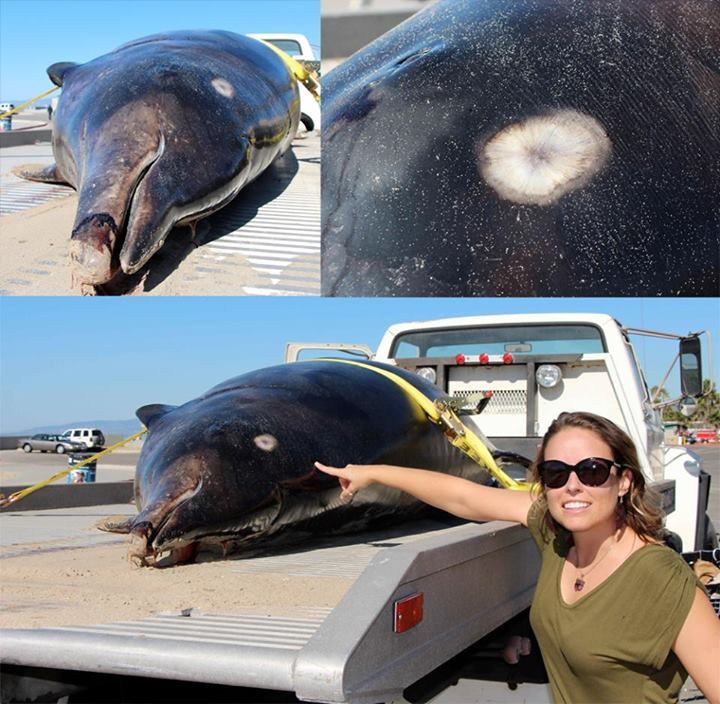
A saber-toothed whale, better known to live in deep Alaskan waters, became stranded on the warm shores of tourist-choked Venice Beach in Los Angeles, Wednesday. "It was a female, and she was covered with cookie cutter shark bites... It is VERY rare and almost never seen alive," the environmental non-profit Heal the Bay posted on their Facebook page shortly after spotting the whale on the beach between Venice Pier and Marina del Rey. "It was really humbling and sad to see such a majestic creature stranded this way," said Heather Doyle, director of the Santa Monica Pier Aquarium. The whale was found barely alive and very weak, but later died.
Jim Dines, a mammalogist of the Natural History Museum of Los Angeles performed a necropsy on the whale shortly after it was found Wednesday. His examination showed no signs of trauma such as being hit by a ship and no signs of disease or parasites, he said. The female whale also didn't have any food in her stomach -- aside from ingested plastic or nylon that wasn't enough to kill her, Dine added. The carcass did show two or three fresh wounds from cookie-cutter sharks, whose name comes from how their bites leave a round wound that cuts through skin, blubber and muscle, but those weren't mortal wounds, in fact, the whale had several dozen scars from such bites, very common in the species. A cause of death hasn't been determined yet, but Dines is waiting on the testing results of tissue samples.
But, what exactly is a saber-tooth whale? 1. These species are formally named Stejneger's beaked whale because they have a narrow elongated beak. 2. However, they get their nickname because the adult male whale grows sabertooth-like teeth, used for combat against other males for dominance in breeding. The teeth protrude outside the gum line and up all the way past the upper jaw. 3. There is currently no estimate on how many of these whales exist because they are so rarely observed in the wild. The species typically dives deep in subarctic waters to feed on squid and small fish. It is believed to migrate as far south as Northern California, and how the whale ended up so far south will probably remain a mystery. 4. The carcass was collected by the Los Angeles County Natural History Museum's Stranding Response Team so scientists can study it and learn more about the whale's physiology and what caused its death.
Although the animal's death is unfortunate, scientists are excited about its discovery because so little is known about them and now they can study it thoroughly. "We helped get it out of the water, and it was still alive," Peter Wallerstein of Marine Animal Rescue said. "I was kind of shocked because we couldn't identify it." "We were very lucky," Nick Fash, an educator who works at the Santa Monica Pier Aquarium, told the Los Angeles Times. "These whales are incredibly rare and almost never seen in the wild."
© 2025 Latin Times. All rights reserved. Do not reproduce without permission.




